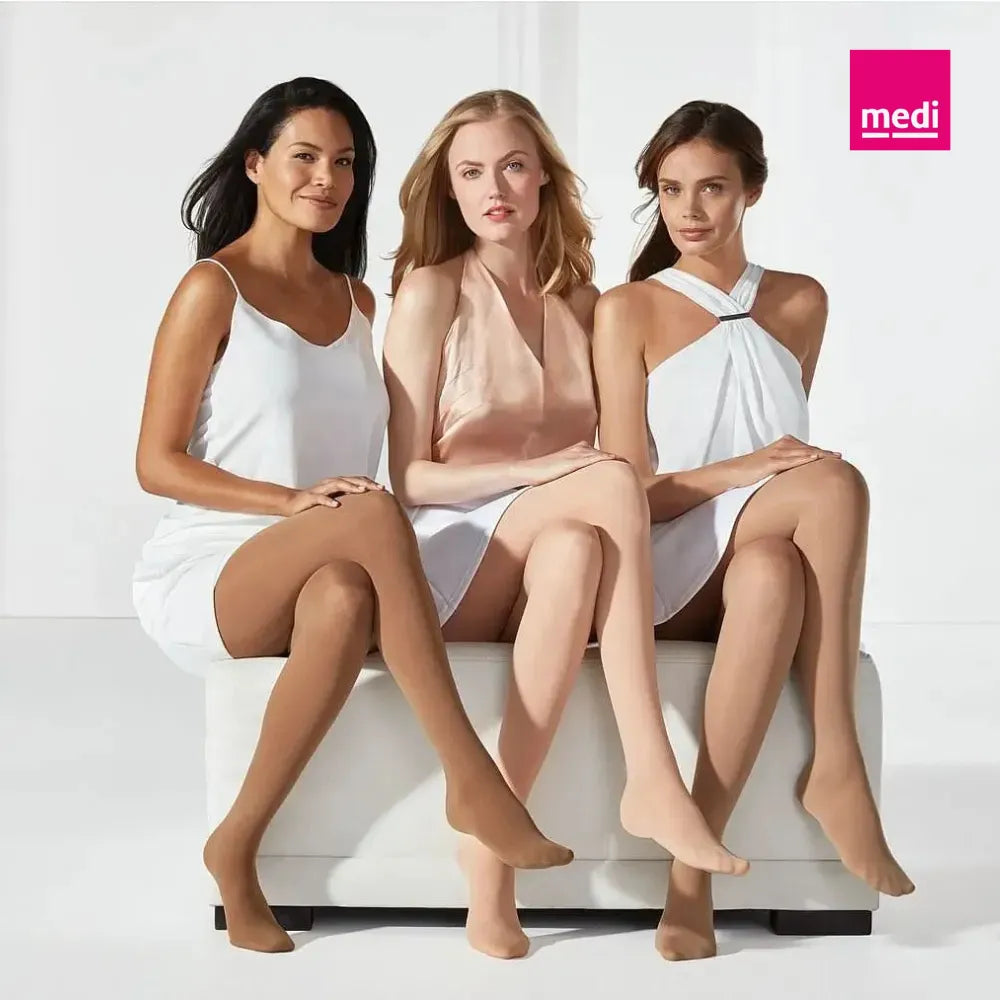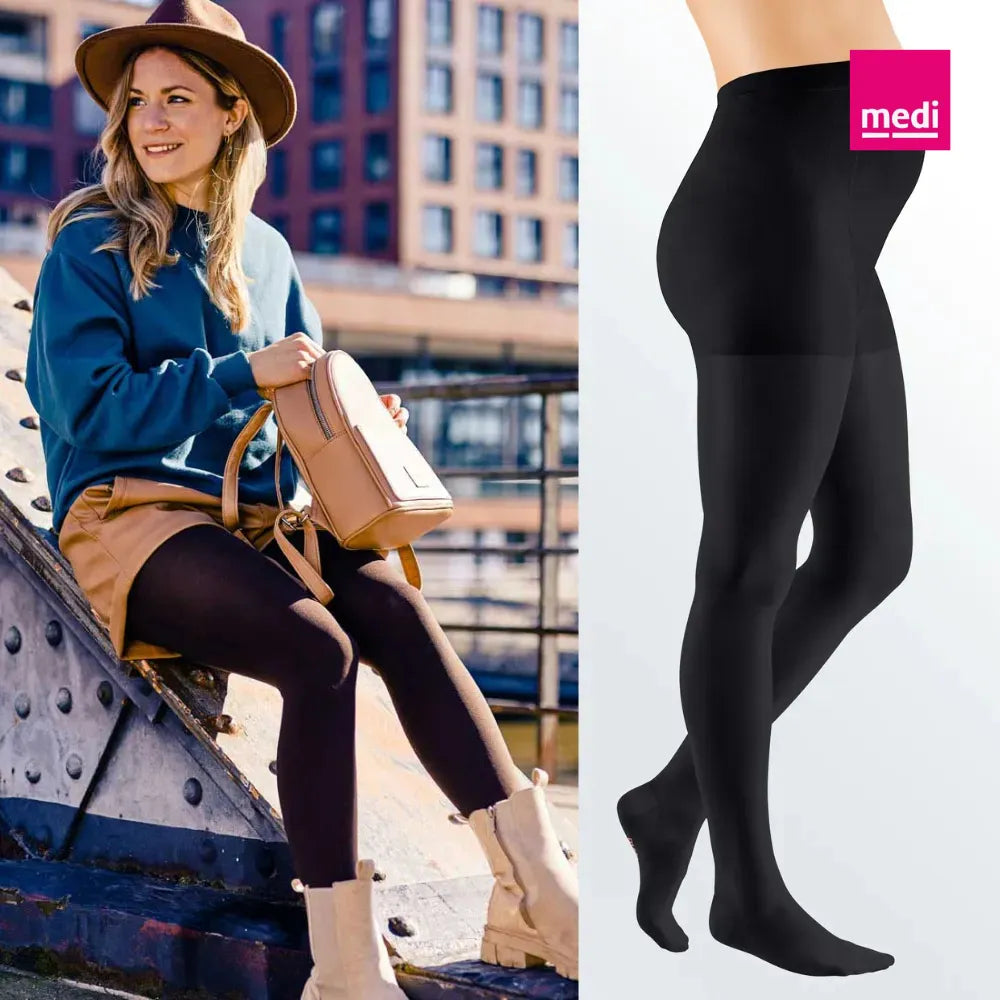Thigh High Compression Stockings: Essential Support for Better Leg Health
Compression stockings are often dismissed by many and seen as a medical need for elderly people or those with ailments. Yet, these incredible garments have several advantages that extend even to athletes, pregnant women, frequent flyers, and people who sit or stand for prolonged periods.
Let's know more about elastic therapeutic garment in detail– what they are, how they work, and why they might be the solution to your leg discomfort you've been suffering from.

What Are Thigh-High Compression Stockings?
Thigh-high compression stockings are specialised hosiery that rise from the foot to the upper thigh, providing graduated pressure to your legs. These medical-grade garments are not like normal stockings or socks but are designed with a particular pressure gradient – the strongest at the ankle and progressively softer as they ascend the leg. This isn't purely for comfort but is scientifically created to improve blood circulation by assisting blood in returning towards the heart against gravity.
This design isn't just for comfort; it's scientifically developed to improve blood circulation by helping blood flow back toward the heart against gravity.
Modern elastic therapeutic garments come in various styles, colours, and pressure levels, making them both functional and fashionable. Gone are the days of bulky, beige medical stockings that scream "hospital wear". Today's options include sheer, opaque, patterned, and even athletic styles that complement any wardrobe while providing therapeutic benefits. Stockings screaming "hospital attire" are now a thing of the past. Sheer, opaque, patterned, and even athletic models are available now, all of which fit any wardrobe while giving a therapeutic advantage.
The Science Behind Compression Therapy
To see why elastic therapeutic garments are effective, we must appreciate our circulatory system has. Blood needs to move against gravity upwards from our feet to our heart. This is especially hard when we are not moving around because our calf muscles usually pump blood upwards. Graduated compression delivers external pressure highest at the ankle (usually 100%) and gradually decreases along the leg (about 40% at the thigh).
The pressure gradient:
Narrow surface veins, raising blood velocity and preventing pooling
Decreases venous pressure, preventing venous ulcers and delivering oxygen to tissue
Reduces fluid leakage from capillaries, minimising swelling
Boosts the efficacy of the calf muscle pump, even in inactivity
This method of supporting circulation is why compression therapy has become a staple treatment for many vascular conditions.
For many, elastic therapeutic garments aren’t just optional, they’re a medical necessity.


They provide external support to improve blood flow and help relieve symptoms such as:
Chronic venous insufficiency – More serious than varicose veins, but the external support provided by compression is of great benefit to this condition.
Post-thrombotic syndrome – Following a blood clot, compression stockings can control persistent symptoms
Lymphoedema – Compression controls swelling due to lymphatic system disease.
Prevention of deep vein thrombosis (DVT) – Particularly useful during hospital stay or extended periods of immobilisation.
Lifestyle Applications
Aside from medical need, a lot of individuals choose elastic therapeutic garments for lifestyle reasons:
Pregnancy – As one gains weight and hormones impact vein elasticity, compression stockings prevent and treat swelling and varicose veins.
Professions involving extensive standing/sitting – Nurses, flight attendants, office workers, and sales professionals frequently wear compression stockings to fight leg tiredness.
Athletes – Benefits of performance and recovery make compression wear a staple in sports
Travellers – Long-haul air travel greatly increases the risk of DVT, making these garments an intelligent option for business travellers.
Compression Levels Described
Compression hosiery is available in various levels, in millimetres of mercury (mmHg). Knowing about these levels is essential for picking the correct product:
8-15 mmHg (Mild): Everyday wear, mild swelling, and prevention
15-20 mmHg (Moderate): Extended periods of standing/sitting, travelling, and minor varicose veins
20-30 mmHg (Firm): For moderate varicose veins, post-sclerotherapy, and moderate oedema
30-40 mmHg (Extra Firm): For severe varicose veins, post-thrombotic syndrome, and severe oedema
40+ mmHg (Medical Grade): For lymphoedema and severe chronic venous insufficiency, a prescription is required
Medical-grade compression stockings (typically 20 mmHg and higher) are prescribed by a medical professional who can prescribe the correct pressure level for your needs.


Common Concerns and Misconceptions
1."Are elastic therapeutic garments uncomfortable?"
Good-quality elastic therapeutic garments, if fitted correctly, should not be uncomfortable. They will feel tight but advances in materials have made them more comfortable without sacrificing on the therapeutic benefits.
2."Are they for the elderly or the sick?"
Not at all! Pregnant women, athletes, and working professionals who stand for long periods benefit greatly from compression therapy. Advances in design have made them stylish & comfortable and they can be worn daily.
3."Are thigh-high compression stockings safe?"
For most individuals, yes. However, with peripheral arterial disease, advanced diabetes with neuropathy, or certain skin conditions you need to speak with a healthcare professional before using compression stockings.
4."Do I need a prescription?"
For mild to moderate compression intensities (up to 20 mmHg), usually no prescription is required. Greater compression intensities are typically medical devices and can be prescribed.
The Bottom Line: Are Thigh High Compression Stockings Worth It?
For individuals with venous concerns, the response is a definite yes. Compression therapy is usually the initial conservative management prescribed by medical professionals. For the rest of us, it's a matter of balancing the advantages against the cost.
If you have leg discomfort, see more spider or varicose veins appearing, or are in a job that has you on your feet or sitting for long periods, thigh-high compression stockings could be the leg-saver you've been looking for.
Keep in mind: For optimal results, seek professional help who can advise on the correct compression level and fit for your individual needs.




Leave a comment
This site is protected by hCaptcha and the hCaptcha Privacy Policy and Terms of Service apply.